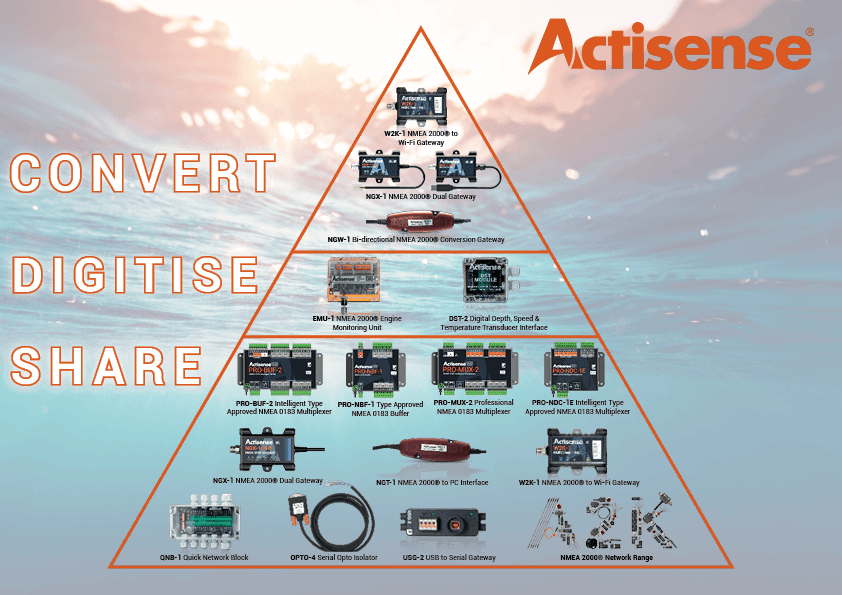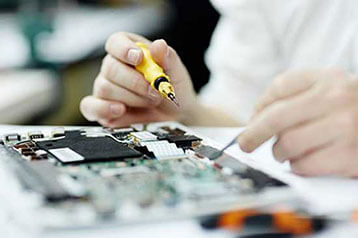Why would I want or need a NMEA Buffer?
There are a number of reasons why an NMEA Buffer is very useful, or absolutely necessary on any size of vessel:
PLEASE NOTE THAT THE NBF-2 IS A RETIRED PRODUCT. BE SURE TO CHECK OUT THE ACTISENSE NBF-3: THE MOST POPULAR NMEA BUFFER AROUND THE WORLD
A) Most NMEA instrument outputs are only capable of driving one, or possibly two receive inputs of other instruments. If the output NMEA data is required by more devices, then the NMEA data must be buffered before splitting it to the individual instruments. If not, the NMEA data can become corrupted as the signal quality degrades below the required level.
The Actisense NMEA Buffer module will perform this buffering task simply and efficiently.
Whilst the 6 outputs of the NBF-3 are capable of driving up to 60 NMEA 0183 instruments, to maintain the galvanic isolation between each of the NMEA devices, it is recommended to use only one NMEA device per NMEA output.
If all the NMEA 0183 devices connected to a particular NMEA output are proven to have a correct NMEA 0183 opto-isolated input, then it is possible to connect one NBF-3 output to multiple NMEA devices and still maintain galvanic isolation. However, this is the only condition where multiple NMEA 0183 devices per NBF-3 output is recommended.
When using multiple NMEA devices per output, the exact number possible will depend on the total cable length, cable quality, and instrument inputs. Longer total cable lengths, poor cable resistance and capacitance, and device inputs not meeting the NMEA 0183 specifications (stipulating a maximum 2 mA drain) will reduce the maximum number of devices drivable.
B) Ground problems can arise when multiple devices are wired together, causing interference and/or excessive current drain from the vessel’s batteries (which can result in damage).
To avoid this, each of the NBF-3 NMEA outputs use the Actisense ISO-Drive design that will isolate the NMEA device connected each of the NMEA outputs from the NBF-3 ground, and from the NMEA 0183 device supplying the data.
This keeps all NMEA 0183 devices isolated from each other, and prevents any ground loops from being made. Without ground loops, all the NMEA 0183 devices are safe from being damaged from ground loops currents.
This allows the installer to connect up the NMEA 0183 system without the need to worry about what devices are true NMEA 0183 devices (with opto-isolated inputs) and without worrying about resulting ground loops.
For more information on NMEA 0183 and how it works, please download our free guide to NMEA 0183 networking here: https://actisense.com/everything-to-know-about-nmea-0183-guide/






